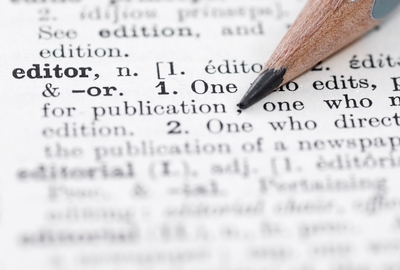We were nearing the end of a Stylistic Editing seminar — a group of about 30 people of varying ages and experience working in-house or freelance for book publishers, magazines, businesses or governments. A woman in the third row raised her hand: “In my work I’m the only editor,” she said, “so I don’t really distinguish among structural, stylistic and copy editing. I do them all.”
I put the question to the whole group: How many of you are “it” in terms of editing? Most people indicated they were the only person who worked on the texts they edited. Several explained they did only copy editing, and one young man, a textbook developmental editor, said he was responsible for that task alone.
Yes, that’s how it is, isn’t it? In Canada at least, only the large trade and educational publishers and those government departments with extensive publishing programs hire both structural and copy editors, with one or both of them taking care of the stylistic editing. Most of the other clients — small and mid-sized publishers, academic presses, corporations, non-profit organizations and the burgeoning group of self-publishing authors — don’t have the budget to hire two different editors to work on one manuscript. Some would be confused by the idea. Surely a professional editor, they’d argue, can look after the whole job? We all go to family doctors to diagnose and treat our ailments, and we’re referred to specialists only for severe problems. Shouldn’t editors fit this same pattern?
But what happens if the editor is comfortable, for instance, only with copy editing? The copy-editing bible, The Chicago Manual of Style, has little to say about stylistic editing, never mind structural work. In this scenario the editor would not be able even to diagnose problems of the larger kind and would spend the entire editorial budget meticulously polishing a text that might have serious structural and stylistic flaws. Is that fair to the client? Does it give editors a good name?
 As a profession, we’ve divided editing into the three tasks of structural, stylistic and copy editing. The division works well as a teaching device and as a guide to us as we initially master the skills in each division. But in the real world of editing, is it too much to expect that editors will be full-service professionals, able to assess, give advice on and work to a fair degree of competence in all three branches of editing? The majority of clients today have scant knowledge of the traditional publishing industry, so listing the “tasks” we will perform has little meaning for them. To complicate matters, many clients refer to all kinds of editing by the term “copy editing,” even though they expect service in every area to improve their texts. They simply want to hire one person to look after the editing for them.
As a profession, we’ve divided editing into the three tasks of structural, stylistic and copy editing. The division works well as a teaching device and as a guide to us as we initially master the skills in each division. But in the real world of editing, is it too much to expect that editors will be full-service professionals, able to assess, give advice on and work to a fair degree of competence in all three branches of editing? The majority of clients today have scant knowledge of the traditional publishing industry, so listing the “tasks” we will perform has little meaning for them. To complicate matters, many clients refer to all kinds of editing by the term “copy editing,” even though they expect service in every area to improve their texts. They simply want to hire one person to look after the editing for them.
What’s your experience as a professional editor — in Canada and perhaps in other countries too? Let’s have a good discussion on this topic as we enter 2014. It’s important not only for us individually but, as new technologies and different kinds of clients make ever more demands on editors, for our reputation as a profession as well.
Discover more from The Editors' Weekly
Subscribe to get the latest posts sent to your email.
